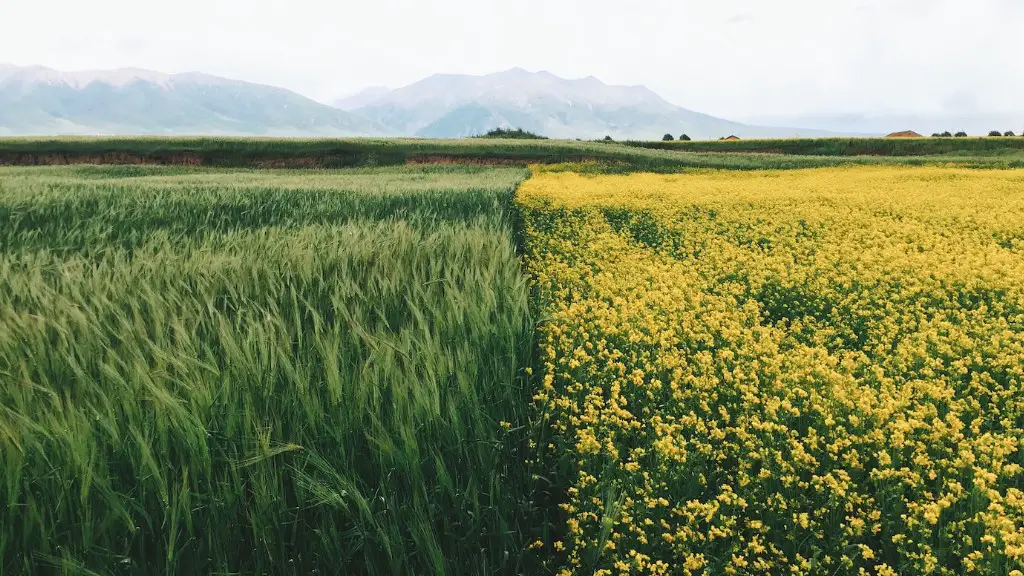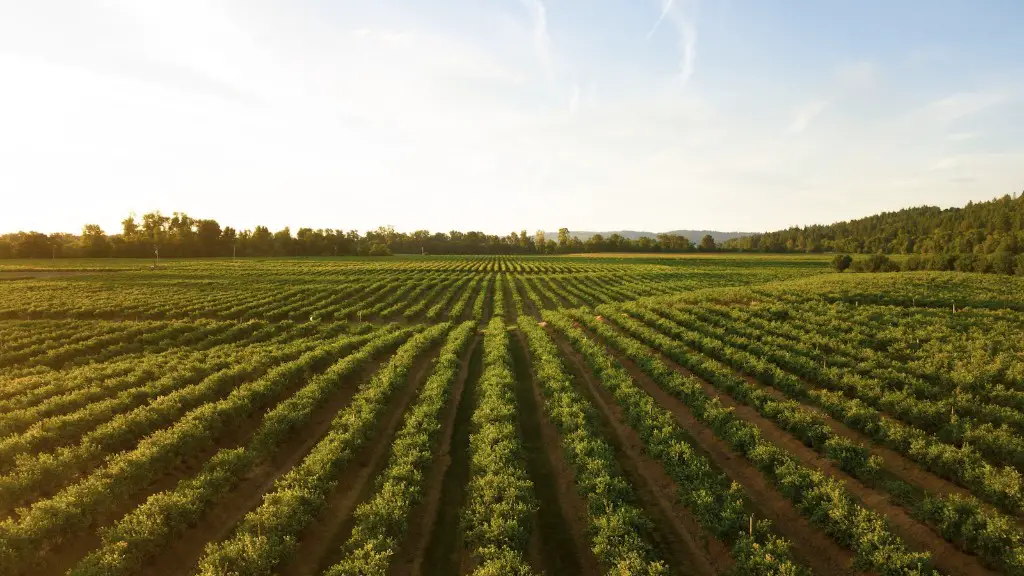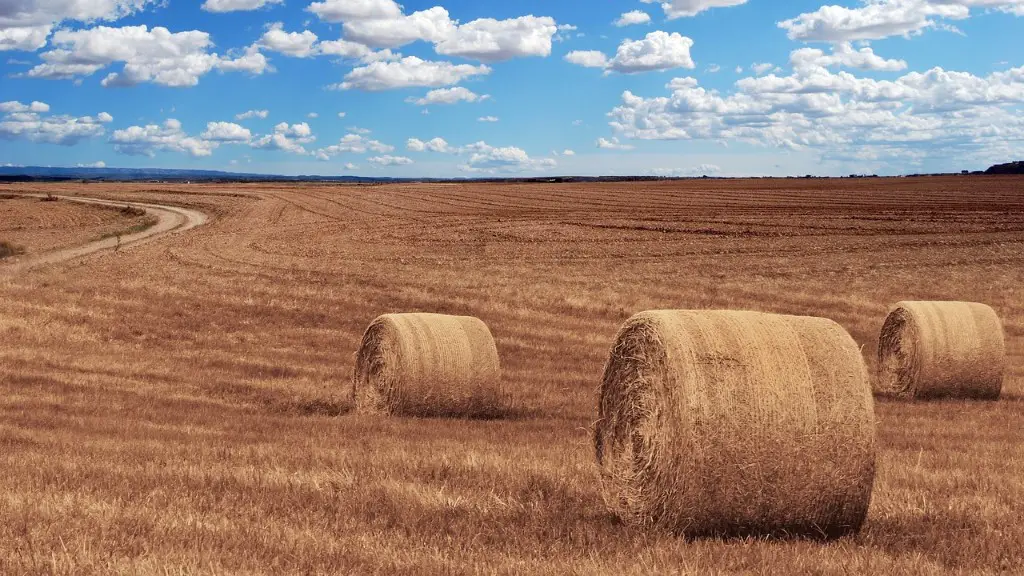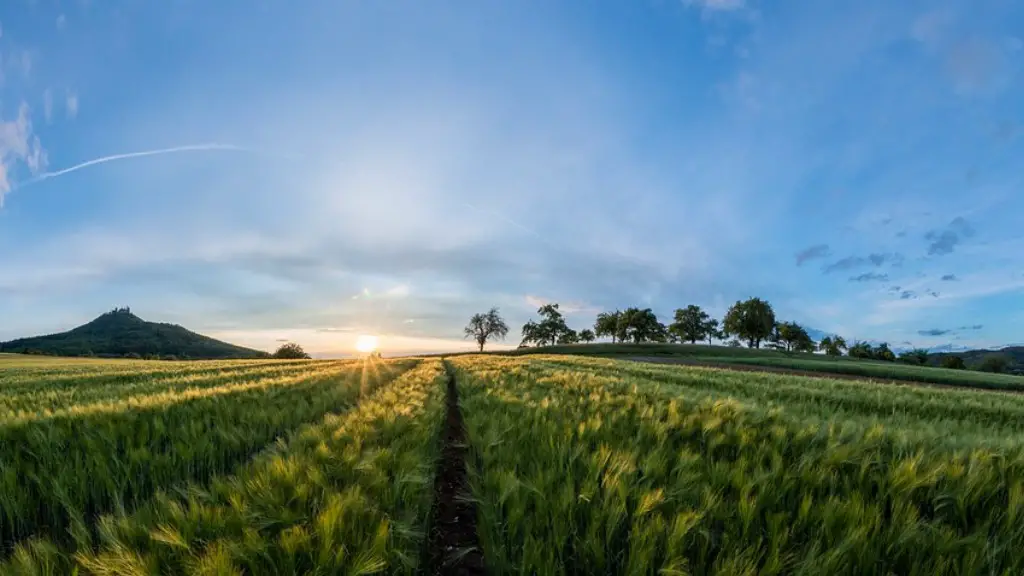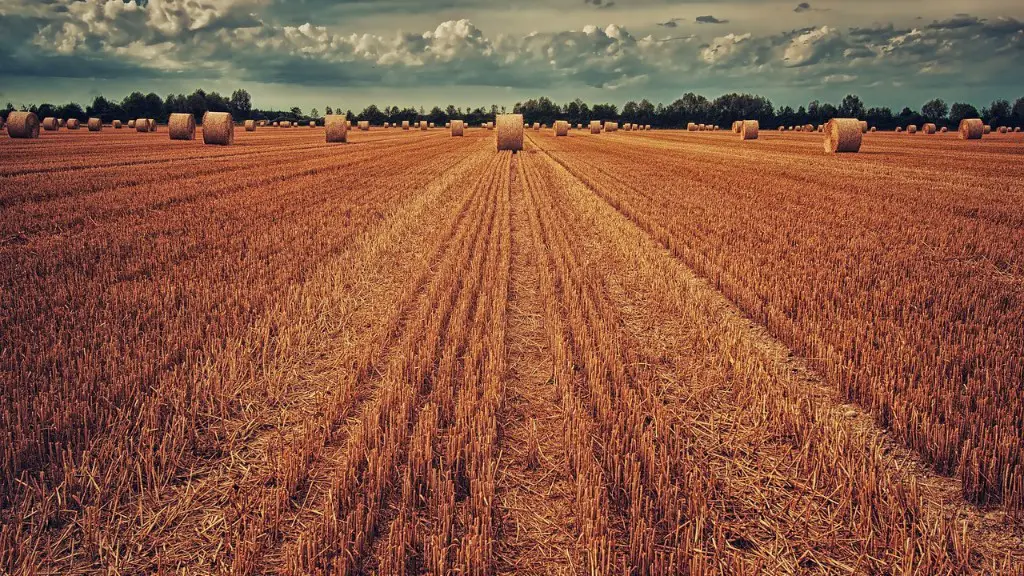GIS (geographic information system) technology has revolutionized the way agriculture is managed. With its powerful data analysis capabilities and mapping technology, GIS plays a key role in helping agriculture professionals make informed decisions. GIS applications and tools can help farmers do things like monitor crop performance, plan and execute operations, analyze risk and respond to natural disasters.
Farmers use GIS to develop comprehensive management plans for their fields and operations. GIS maps enable farmers to quickly identify the best crops, soils, and water sources for their land. With sophisticated GIS mapping and analysis techniques, farmers can predict where crops and land use activities may interact, and can plan these activities to optimize land use and crop production.
GIS also enables farmers to optimize field operations. By leveraging GIS data in the form of remote sensing images and climate information, farmers have a better understanding of their current crop status and can track the performance of their fields. This information can be further used to develop strategies for the proper targeting of protective measures, such as fertilizer application and tillage.
Additionally, GIS technology can help farmers to accurately analyze the risk of yield during a crop growing season. Armed with GIS data, farmers can visualize and predict the potential danger of pests and diseases, as well as other factors that may affect yields. With a comprehensive view of risk factors, farmers can better prepare themselves to protect their fields and reduce the potential losses caused by unpredictable weather patterns.
GIS also plays an important role in the response to natural disasters. By leveraging GIS data, farmers can accurately assess damage caused by hail, floods, or fires, and then take the necessary precautions and repairs. GIS analysis tools and applications can also be used to understand the impact of a disaster and plan the most efficient ways to get crops back on track.
In conclusion, GIS has revolutionized the way agriculture is managed, with its powerful data analysis capabilities and mapping technologies. GIS can help farmers create comprehensive management plans, optimize operations and target protective measures, analyze risk, and respond to natural disasters. GIS offers great opportunities for farmers to use data-driven insights to optimize their operations and maximize their yields.
Crop Monitoring with GIS
Farmers can use GIS data and mapping technology to keep a close eye on their crops from the sowing phase to the harvesting phase. Remote sensing images can help farmers to monitor crop health and yield, and GIS analysis tools can identify potential problems and pests before they become a serious threat. Additionally, crop monitoring helps farmers to identify areas where fertilizer or pesticide applications should be targeted.
GIS is especially helpful in monitoring yield and other factors throughout the season. Farmers can define their field boundaries and isolate crop groups, such as corn, soybeans, or other grains. With GIS data and technologies, they can identify potential variations in crop performance even at the individual field level. This level of detail can be invaluable in helping farmers quickly identify problems and address them before they become a major issue.
GIS maps also enable farmers to analyze climatic conditions over time, and compare related data such as rainfall and temperature. This detailed analysis can help farmers to forecast potential risks, such as drought or floods, and take the necessary precautions.
In addition, GIS data can provide farmers with valuable insight into wider regional trends. By comparing crop performance with other farms in the region, farmers can gain valuable insights into regional factors such as soil type, climatic conditions, and pest and disease risks.
Using GIS for crop monitoring can help farmers to respond quickly to pests and diseases, identify problems in specific fields, and develop the most effective strategies for protecting their land.
Agricultural Planning with GIS
GIS technology is also used in agricultural planning. Farmers can use GIS data to compare different types of crops and identify the most suitable for their particular area. GIS maps enable farmers to understand the local terrain and identify suitable locations for drainage, irrigation, dams, and other infrastructure.
Additionally, GIS maps can help farmers analyze factors such as soil fertility and identify local crops suitable for the land’s features. With GIS, farmers can also identify profitable land-use patterns, such as areas suitable for forestry, livestock, or crop rotation.
GIS tools can also help farmers manage their resources more efficiently. By understanding the local land type and water resources, farmers can identify the most suitable areas and efficiently plan and manage their irrigation systems. GIS can also be used to identify potential water pollution sources and recommend mitigation solutions.
GIS mapping and analysis tools also help farmers to accurately analyze the risk of yield during a crop growing season. GIS can be used to help farmers understand their water sources, calculate the water available for crops, and model water resources systems such as rivers and aquifers.
By using GIS for planning and resource management, farmers can optimize their operations, ensure efficient land use, and maximize their yields.
Asset Management with GIS
GIS is an indispensable tool for farm asset management. With GIS, farmers can track and analyze their inventory of assets such as grains, manufacturing equipment, and farm machinery. GIS mapping and analysis tools enable farmers to monitor the performance of their assets and identify areas of inefficiency.
Using GIS, farmers can also monitor the performance of their assets in real time, and use this data to predict and prevent breakdowns. GIS data can help farmers analyze the performance of their machinery, and identify weak points or defective parts before they lead to an unexpected break. GIS technologies can also be used to accurately measure your fields, and monitor your crops to ensure optimal development and harvest.
Additionally, GIS data and analysis tools can help farmers to visualize and analyze their financial investments, such as the cost of new equipment or the cost of labor. This insight can help farmers make sound decisions in the management of their assets, and optimize their operations.
In conclusion, GIS technology is a powerful tool for farm asset management. GIS can help farmers monitor the performance of their assets, identify potential inefficiencies, measure their fields, and analyze their financial investments.
Risk Management with GIS
GIS is also a critical tool for farmers in managing risk. GIS enables farmers to accurately analyze the risk of yield and other factors during a crop growing season. With GIS data, farmers can model and predict the potential danger of pests, crop diseases, and other factors that may affect yields.
GIS technology also helps farmers to quickly provide accurate information to insurers in times of disaster. Remote sensing images can help farmers to accurately assess the extent of damage caused by hail, floods, or fires, and the data can be quickly sent to insurers, enabling an efficient response.
GIS tools and analysis can also be used to understand the impact of natural disasters and help farmers to develop the most efficient strategies to repair their crops and get back on track. GIS can even be used to identify potential disaster scenarios in order to prepare farmers in advance and reduce the potential losses.
Risk analysis with GIS also enables farmers to analyze their insurance coverage and make sure it is sufficient. GIS tools can be used to quickly assess historically reported risks and compare the likelihood of an unpredictable disaster affecting the farm. With a comprehensive view of risk factors, farmers can make sure their insurance policies are up-to-date and meet their needs.
In conclusion, GIS technology is an essential tool for risk management in agriculture. GIS enables farmers to accurately analyze the risk of yield, quickly assess the extent of damage caused by disasters, and assess their insurance coverage to ensure their policies are sufficient.
Data Collection with GIS
GIS technology can also be used for collecting and managing data on farms. GIS data can reveal a wealth of information about the types of crops being grown, soil fertility, pests and diseases, crop yields, and even irrigation systems. This data can be invaluable for optimizing farm operations and maximizing yields.
GIS also enables farmers to quickly identify key points in their crops and fields. By collecting data at these points, farmers can track the performance of their fields and precisely monitor the effects of their activities. GIS mapping and analysis tools can also help farmers to analyze their data and develop action plans for achieving their targets.
Farmers can also leverage GIS data to identify trends in the local market and make informed decisions about their production plans. GIS mapping can be used to analyze sales data, identify changes in demand, and adapt the production plan accordingly.
GIS provides an opportunity for farmers to collect and analyse data from different sources, such as surveys, mapping, and satellite imagery, within a single platform. This holistic view of the farm allows for more informed, data-driven decision-making.
In conclusion, GIS technology is an invaluable tool for data collection and management on farms. GIS enables farmers to collect data from different sources and analyze it to identify trends and inform their production plans.
